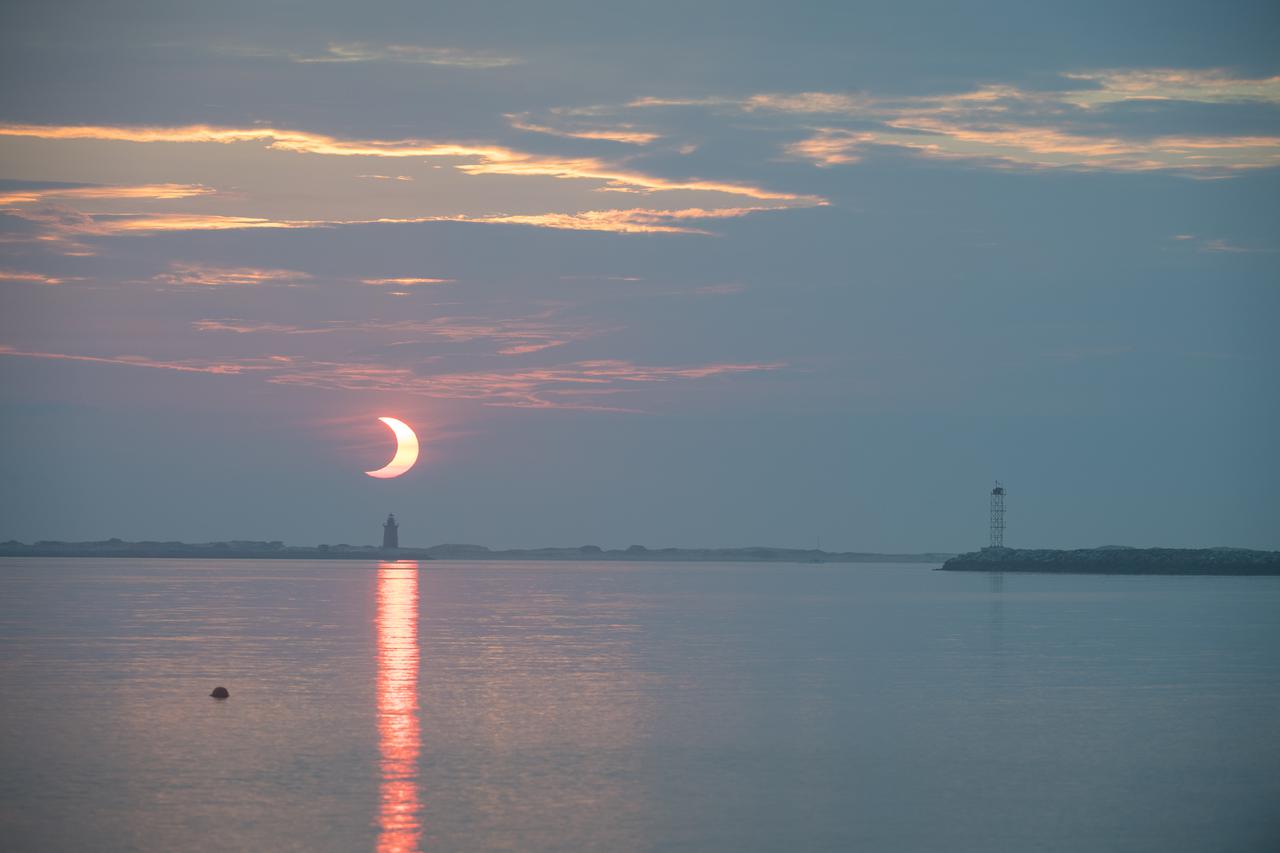Event: How to view partial solar eclipse this weekend
October 12, 2023

October 12, 2023

Vancouverites will be able to view most of an annular solar eclipse this Saturday.
An annular solar eclipse occurs when the moon passes between the Earth and the sun at its furthest point from our planet, meaning it doesn’t blot out the sun entirely but instead is surrounded by a ‘ring of fire’ for viewers in the path of annularity.
The eclipse on Oct. 14 will cross North, Central, and South America. Weather permitting, Vancouverites will be able to see nearly 75 per cent of the phenomenon, or a partial eclipse, beginning at 8:08 a.m., peaking at 9:20 a.m., and finishing at about 10:38 a.m. “We aren’t in the annularity zone so we won't see the ring from here,” said Dr. Jaymie Matthews, professor emeritus in UBC’s department of physics and astronomy. Rather, people in Vancouver are likely to see a thin crescent of the sun behind the moon.
It's never safe to look directly at the sun during an annular eclipse without special protective eyewear. If weather co-operates, UBC department of physics and astronomy researchers will be hosting a public viewing event outside the UBC Bookstore with eclipse-viewing glasses available for members of the public to borrow for the event.
While many of the phenomena that mark a total solar eclipse are unlikely to occur for the annular, including a drop in temperature and birds falling silent (tricked into thinking it’s night), an annular eclipse is still good viewing for those who haven’t seen it before.
“We’re all space tourists,” said Dr. Matthews, who has viewed six total eclipses when the moon completely covers the sun, and is booked to see his seventh in April 2024.
"We're so used to seeing the sun as a bright ball in the sky, that it's amazing to see it with a large chunk covered by the moon,” said Dr. Douglas Scott, professor in the department of physics and astronomy. “A partial solar eclipse is one of nature's great shows—and it's free!"
“It’s not something you can see every day,” says science masters student Justine Obidowski. “I like helping people observe astronomical events, and understand our place in the solar system.”
We honour xwməθkwəy̓ əm (Musqueam) on whose ancestral, unceded territory UBC Vancouver is situated. UBC Science is committed to building meaningful relationships with Indigenous peoples so we can advance Reconciliation and ensure traditional ways of knowing enrich our teaching and research.
Learn more: Musqueam First Nation